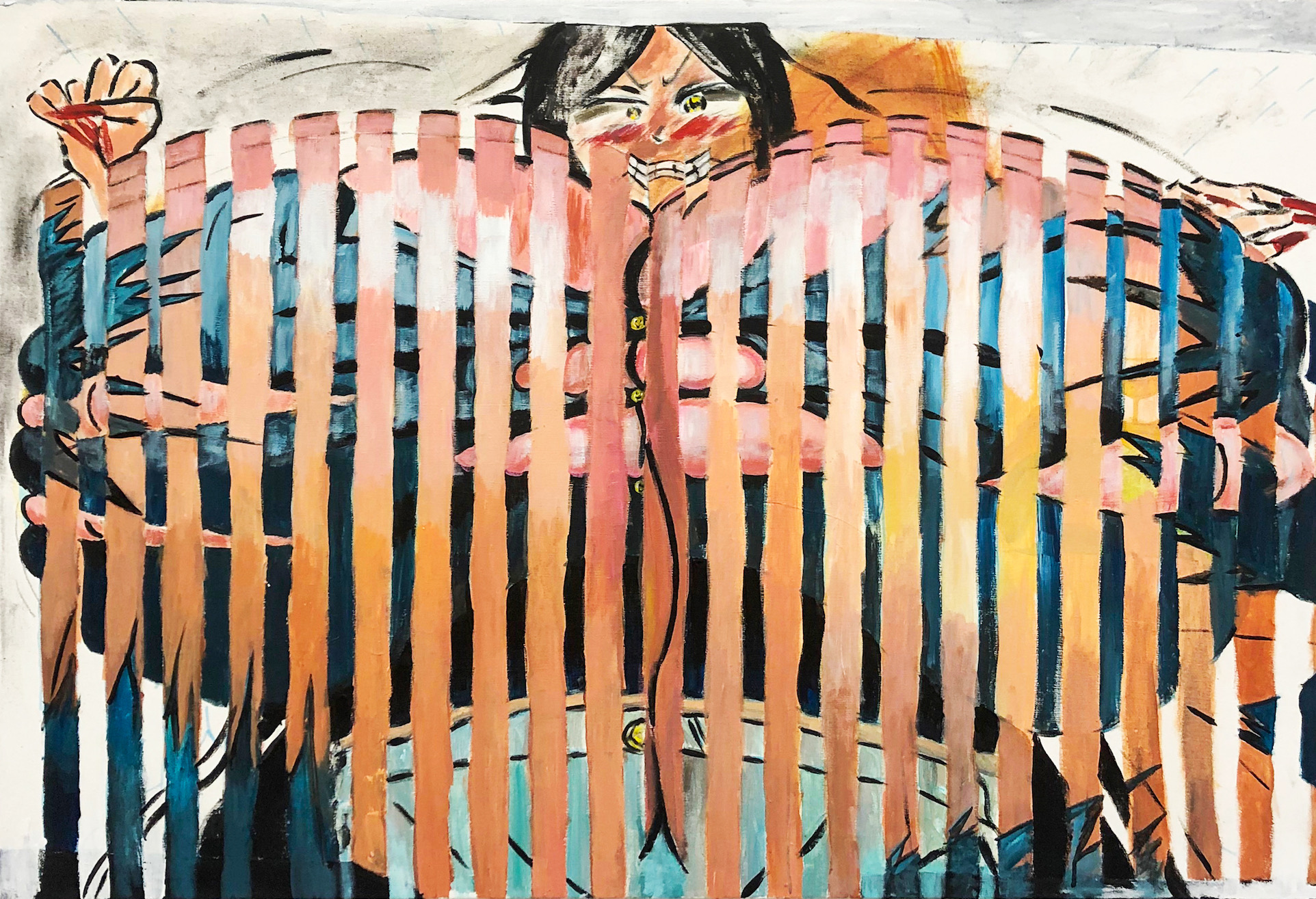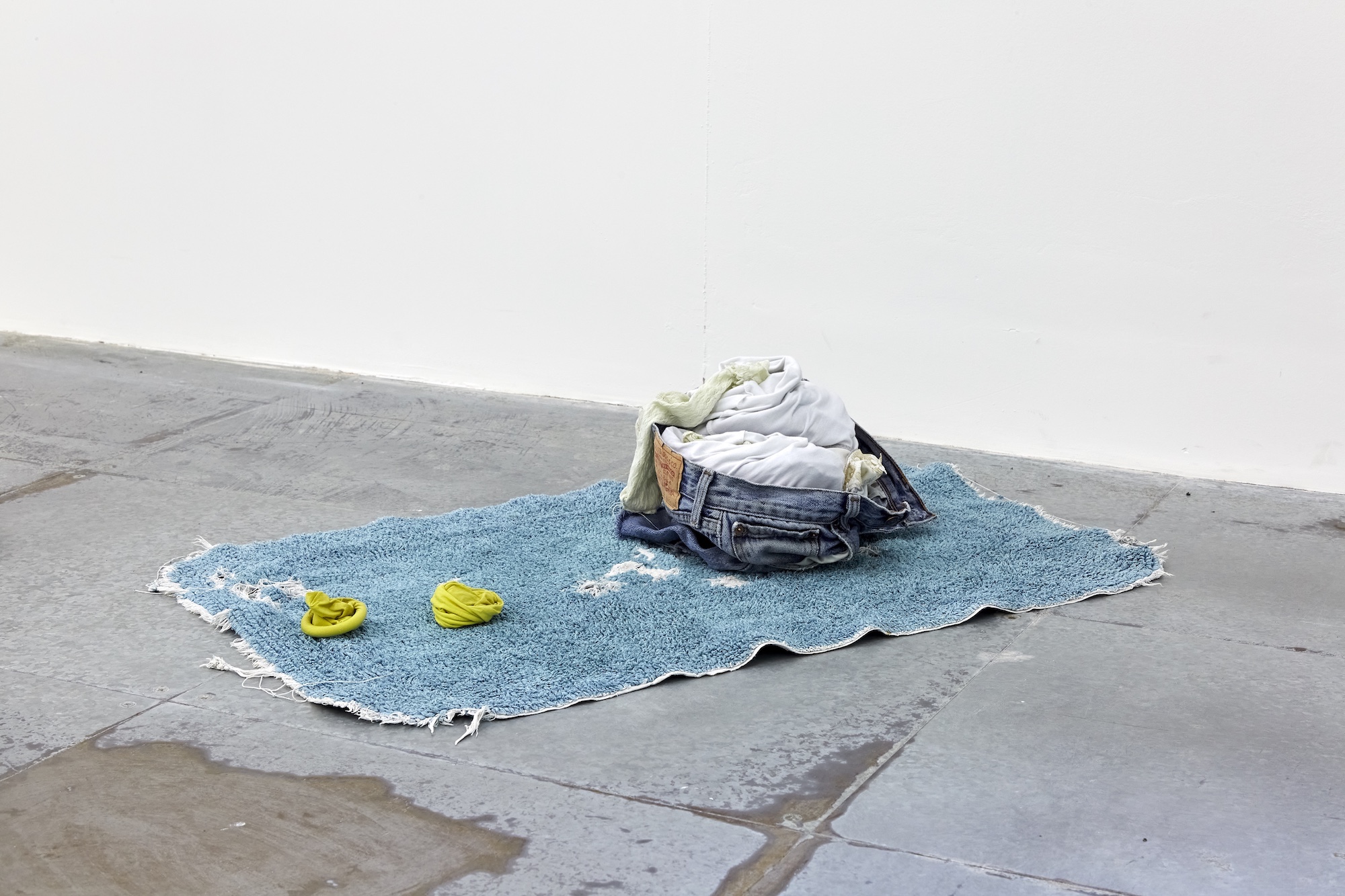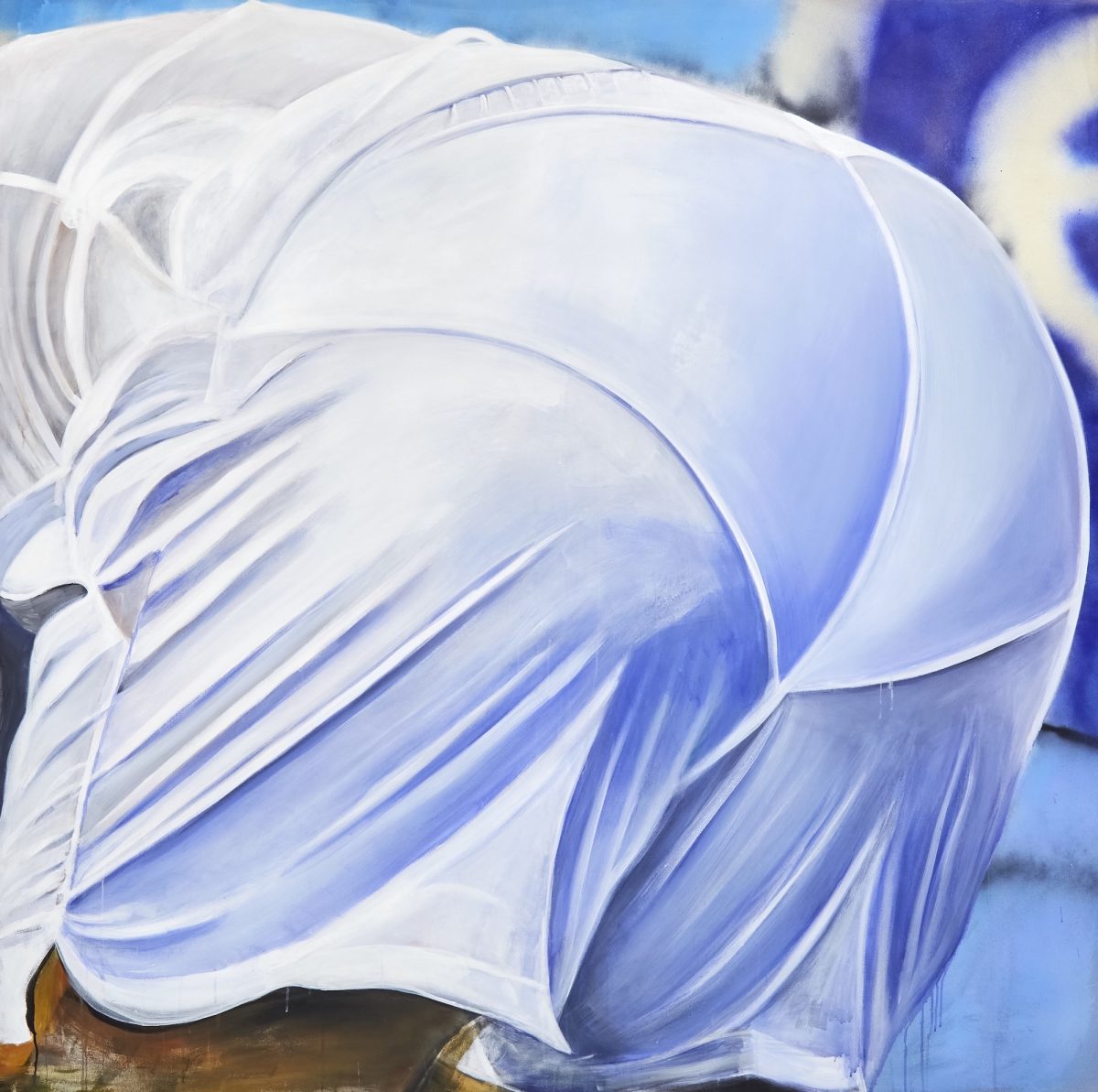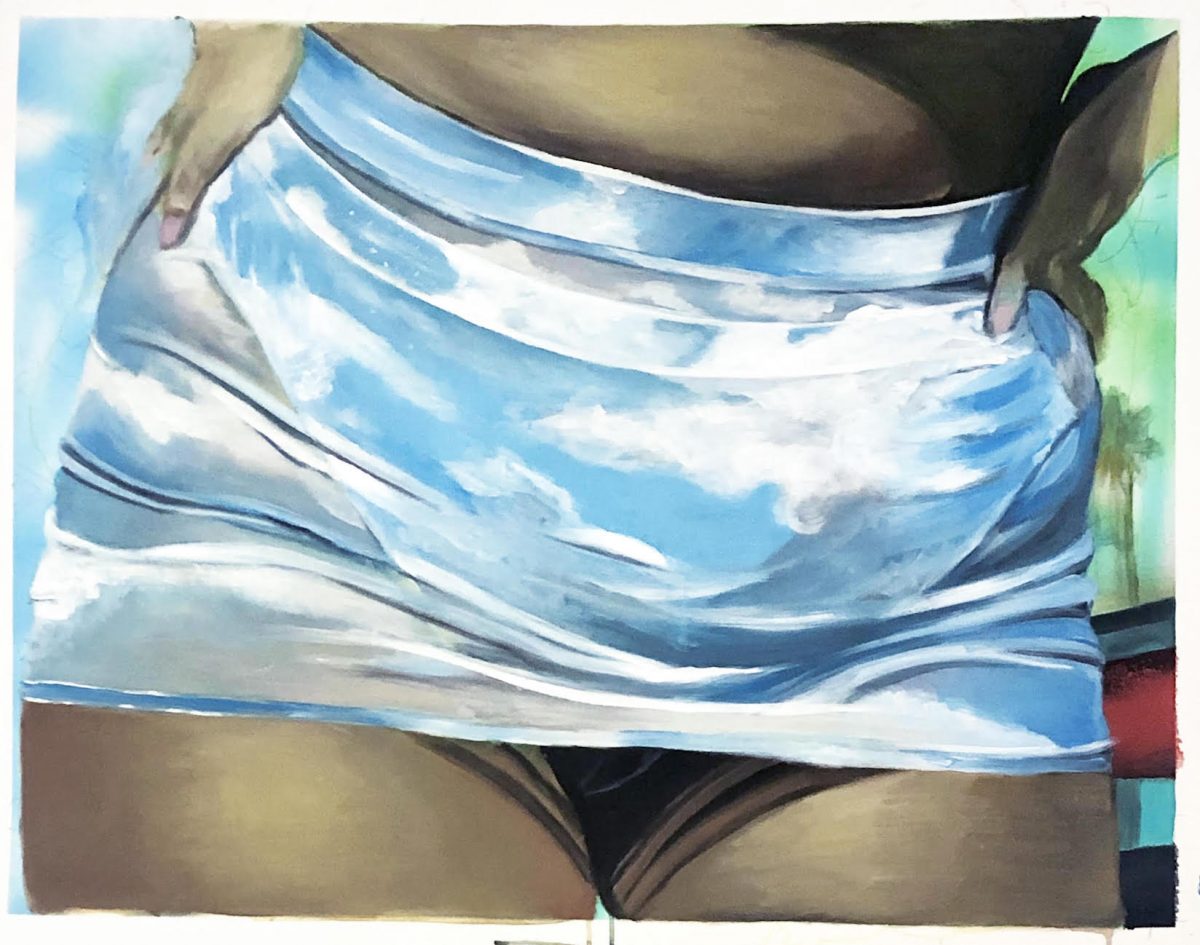
The female figure is foregrounded in the tender work of Japanese-born artist Motoko Ishibashi. Her paintings reframe the body in often-confrontational tight crops that focus on the crotch or posterior, in images that are at once hyper-sexualised and unguardedly intimate. She creates the sensation of having invaded into a private space, and consciously toys with the discomfort that results.
Popular culture in the age of the internet is an important touchstone in Ishibashi’s work, from the culture of online oversharing to the question of ‘good’ and ‘bad’ taste. The experience of browsing through multiple disparate images online, whether on Instagram or via multiple browser tabs, is conjured up in paintings that overlay imagery to the point of distortion.
Ishibashi studied painting at both the Slade School of Fine Art and the Royal College of Art in London, and has exhibited recently at Quench Gallery in Margate and VO Curations in London. She frequently draws into question the history of painting itself, combining Japanese traditional styles with elements from the western painting canon, highlighting how our understanding of the mastery and legacy of a medium is often distorted and subject to our own personal biases.

If you could save only one item from your studio, what would it be?
My laptop. It would be nice to say a rare edition of something… but the reality is the laptop is indispensable. It holds a big part of my planet, and it just does everything.
“I bought an anatomically correct vinyl doll of a newborn baby online and stuck its hands to a sculpture of a peach”
What was the last art material you bought to use in your work?
I bought an anatomically correct vinyl doll of a newborn baby online. I use found objects from time to time. I used the hands of the doll and stuck them to a sculpture of a peach that I made for a recent show. They were placed at the top of the peach where there was a hole with some steam coming out. I wanted them to make it look like they were born out of the peach.
What is your go-to song when you’re working in the studio?
I don’t really have a specific one. I tend not to listen to music while working, but when I do I always repeat the same tracks over and over until I’m starting to get bothered by them. And then I move on to something else…
Which single work of art would you choose to live alongside?
A James Turrell Skyspace. They are the ultimate zen pieces, simple and beautiful.

Top three art or photography books?
I can’t choose favourites. I like browsing the books of artists like Andy Warhol, Isa Genzken, Jean-Paul Goude and Jörg Immendorff in general, it always feels good. I enjoy anime and magazines such as Plexus, Barazoku and Visionaire. I don’t have many books but A Rake’s Progress by David Hockney (1967) and E’wao Kagoshima‘s 1976 exhibition book, which he made like an LP, are my favourite artist books from the shelf.
“I would love to work with professional athletes and racers. I love the beauty of the intensity and the energy they are able to produce”
If money were no object, what would you most like to experiment with in your work?
I would love to work with professional athletes and racers. I love the beauty of the intensity and the energy they are able to produce.

Tell us a pet peeve of yours when it comes to the art world.
I want to see it become more fun.
What is your favourite gallery or museum space?
Museums such as the Boijmans in Rotterdam, the Prado in Madrid to see Hieronymus Bosch, Fra Angelico and more, and the Musée de Cluny in Paris. I like to see local artefacts and paintings in temples and monasteries when traveling. I like the Sainsbury Wing of the National Gallery in London too, and often casually pop in.
Louise Benson is Elephant’s deputy editor








